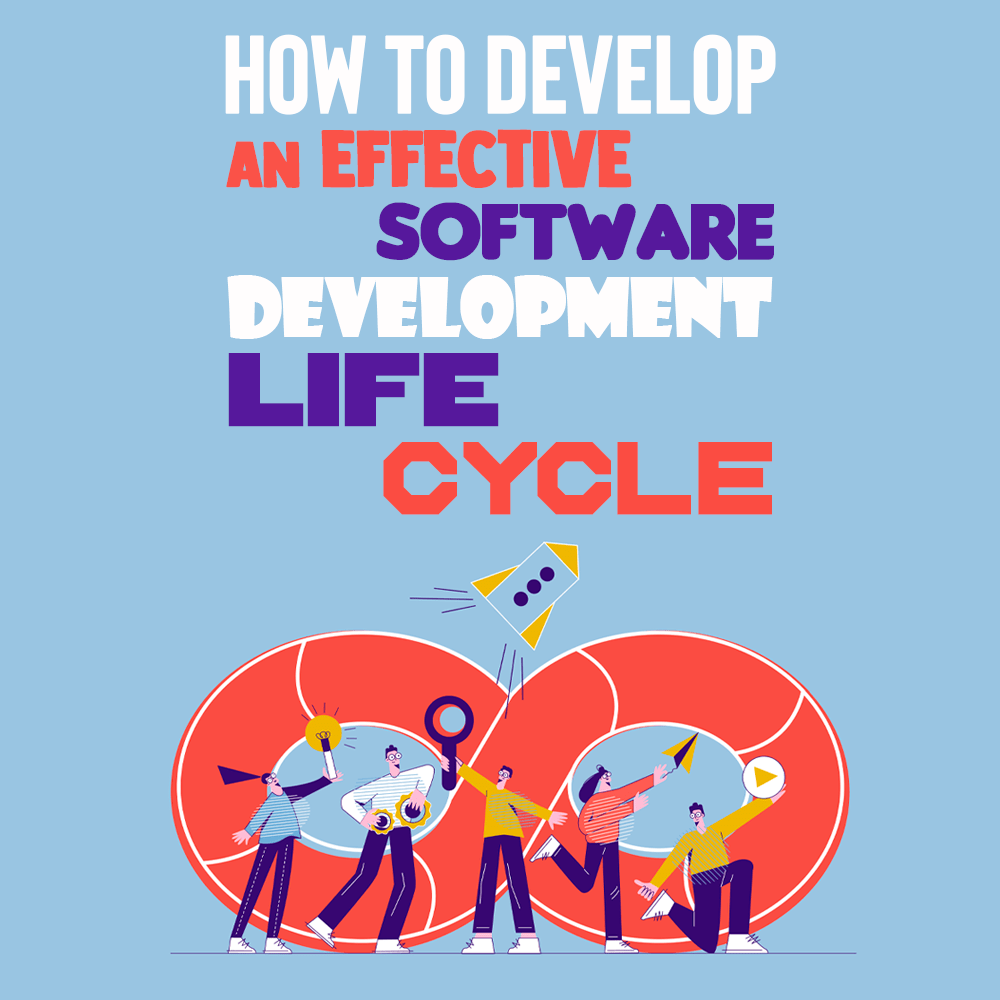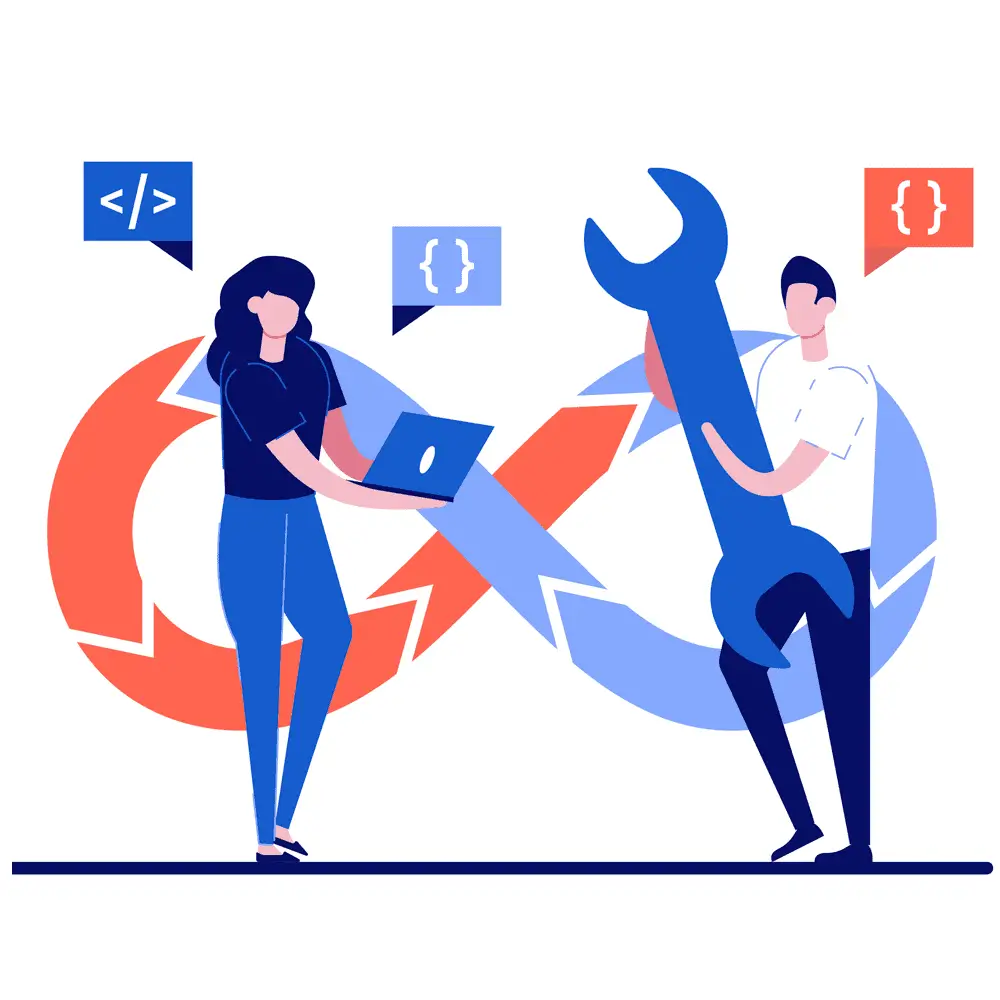
After the software crisis, experts found the need to manage the software development process in a more organized manner. Their main focus was to develop a systematic structure to streamline the process and increase the success rate of the development. Because the industry is so dynamic, there is a constant need to update our development process into new and improved versions.
Therefore, we have numerous methodologies to develop software, thereby allowing greater efficiency. These methodologies include the waterfall model, the agile model, and others. According to many developers, the agile model is the most reliable and popular software development model.
Developers without a well-founded pattern for their development process have to spend many hours to create a successful tool. They require a proper framework to manage their tasks, finance, and resources. Therefore, experts in the field highly suggest that you follow the software development life cycle (SDL). In this post I offer you a comprehensive guide on how to develop effective software through a reliable process.
What Is SDL?
Software Development Life Cycle is a standard procedure to go through detailed steps and devise effective software through the process. Many developer teams follow this method to meet customers’ needs in a given time frame, while reducing the costs and resources.
As I will show you later in this post, the life cycle includes six to eight steps—though, depending on the project, developers might add, remove, and combine the steps. The ultimate goal of these steps is to keep you highly focused throughout the development process, enabling you to evaluate and enhance the quality of the software.
Because this process generates valuable outcomes, many developers spend hours on it so that their tool smoothly runs according to the expectations. In addition to all the above benefits, the software development life cycle includes tests to identify inefficiencies, reduce costs, and fix errors.
How SDL Works
Software development life cycle is a way to improve quality, while reducing production time. SDL offers a plan that helps you evaluate the project and achieve your goals. Besides, it defines the requirements of your project. When you understand the necessities of your project, you can anticipate mistakes and find the best possible solution.
The underlying reasons to focus on SDL are to test how operational your project development process is, how the action plan works, and how you can improve cooperation among co-workers within the team.
After you complete the development process, you run through the SDL procedure and identify potential problems. Once you figure out the issues, you find solutions and implement them. As this is a repetitive process, you must repeat the life cycle until the tool aligns with expectations. Many developing teams do not realize that with additional effort, they can save a lot of money, time, and resources.
Before you implement any software development life cycle models to develop and analyze your software, you need to determine whether the tool is the right one for your project or not. While you pick a process, consider the size of your team, their capabilities and experience, the size and the complexity of the project, and how your team will use it.
Phases of SDL
To make the development process efficient, smooth, and productive, there are specific steps to follow—the phases of the software development life cycle. They are as follows.
Planning
The first phase of SDL involves brainstorming or planning. Start the process with an idea, and discuss with the team the methods to implement those ideas. Carefully evaluate the project, considering various terms, including assigning members to teams, designing a leadership plan, scheduling a plan according to goals, and assessing labor and material costs. Explain all the essential elements of the process to your team so they focus on a similar goal and avoid confusion.
Requirements Definition
During this phase, you must define what the project is about and how to make the development process more viable. Other than developing a catchy design and clean code, finding an actionable solution requires your team to have a better and comprehensive understanding of the project.
Design and Prototyping
Once your team members develop a thorough understanding of what they are developing, it is time to create the design. The engineers and designers will define the workflow and process to provide solutions, utilizing database structure and design. In this phase, the main focus of the team is to design a prototype for the following step.
Development

You can track your developers’ changes by source code or access code. This phase also includes documentation, which is a quick guide explaining why the developer used a specific piece of code. Documentation can be a video guide, a written guide, or a comment on the source code.
Testing
Once your team completes the development process, they begin testing. The quality assurance team will conduct tests, including system integration, functionality, and interoperability. Furthermore, they ensure the code is clean through user acceptance testing. Their main purpose is to meet business goals.
Deployment
This process involves the actual installation and implementation of the data and other components of the project. The time and effort required to complete this phase depend on the complexity of the tool.
Operations and Maintenance
Once you implement the software in the market, you must update the tool and run maintenance on a timely basis. This is the final phase of the software development life cycle, and it involves satisfying end-users by adding new capabilities and improving performance through regular upgrades.
Different Models of SDL
Numerous models are available to help you with the software development life cycle, and each one includes different steps for the success of the software development process. Below, I will explain some of the popular models with their respective pros and cons.
Waterfall
The waterfall is the first model used for software development. This model consists of different phases, including requirements gathering, designing, building, testing, development, and maintenance. Simple and easy to use, waterfall enables you to generate specific outputs for each phase along with reviews.
Another reason to choose this sequential life cycle model is that it is suitable for small projects with clear instructions. Such a model is adaptable but costly. In this model, you can evaluate the feasibility and continuity of the software.
Agile
The agile model solves numerous problems that traditional models fail to solve. It includes different incremental and iterative process models focusing on customer satisfaction and process adaptability. The main purpose of using this tool is to develop software based on customers’ needs.
If your team is highly skilled and you want to avoid documentation to speed up their development process, the best choice would be agile models. These tools are flexible and adaptable but require a lot of experience to understand because breaking the product into different small sections to deliver specific features is a demanding task.
DevOps
Similar to the agile model, DevOps will enhance the usability and relevance of the software by combining different tools and practices. The main feature of DevOps is that it speeds up the software development process so you can survive in the competitive market.
This model includes phases where you can gather and evaluate the feedback from end-users. One drawback to using DevOps is that it does not enhance your communication and collaboration process, so you have to spend additional money including similar tools in the process.
Spiral Model
This model is a combination of the sequential linear development model and the iterative development process model. The spiral model is one of the most flexible. While using the spiral model, you must go through the process again and again until you find the desired result. Every repetition will improve your tool further.
There are four phases for the spiral model including identification of the requirements, designing the baseline, producing the actual software, and analyzing the risk. The spiral model enables operation teams with developers to combine the workflow, saving time and reducing inefficiencies.
Scrum Methodology
Scrum is an evolution of the agile management system. After adaptation, you can increase the productivity of your software development process. It enables you to produce better quality products and develop better team dynamics by keeping the information and requirements transparent.
The scrum process involves analyzing and organizing the backlog and sprinting the planning. Scrum is a simple and easy-to-understand framework that enables you to manage complex tasks and bring transparency to the software development process.
An Effective SDL Helps You Meet Your Objectives

By utilizing the software development life cycle, you have an opportunity to develop the workflow. You can then choose the degree of details your developing team should know—without providing all the information. You can further enhance the working process with the help of a project management tool. Remember that SDL models are not permanent. You can change the process as the team grows, circumstances change, and the business expands.
Keep in mind that an effective software development life cycle determines the purpose of the tool so you can start the development process. The process you choose to develop the software will help you meet your strategies and objectives. Moreover, SDL helps identify the best ways to efficiently utilize resources within a certain timeframe and determine the most favorable solutions.
